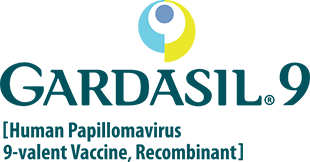Home > HPV-related cancers and diseases
Many low-risk HPV types will clear up on their own, but some can cause genital warts. There are also high-risk types that can cause cancers like cervical, vaginal, vulvar, anal, penile, or certain head and neck cancers, such as throat and back of mouth cancers.
Listed below are diseases that can be caused by HPV.
-
For women
-
For men
-
For parents
For women
HPV causes almost 100% of cervical cancer cases
Cervical cancer is the 3rd most common cancer
in Canadian women 20–40 years of age.
It’s estimated that 1,400 Canadian women will be diagnosed with cervical cancer each year.
When a woman is infected with certain types of HPV and the virus doesn’t resolve on its own, abnormal and precancerous cervical cells can develop in the lining of the cervix. Pap tests look for these abnormal cells, but if they aren’t detected early and treated, pre-cancer and then cervical cancer could develop.
About 60% of women who develop cervical cancer have not been screened with a Pap test or have been inadequately screened. Studies estimate that when a cervical cancer screening program is in place, it can reduce cervical cancer deaths by 70% or more.
HPV can also cause other cancers like vulvar, vaginal, anal and certain head and neck cancers, such as throat and back of mouth cancers.
It’s a fact…
Head and neck cancer includes cancers of the mouth, nose, throat, sinuses, salivary glands, larynx and lymph nodes in the neck. HPV-related head and neck cancer may not cause any signs or symptoms in its early stages. HPV types 6, 11, 16, 18, 31, 33, 45, 52 and 58 cause at least 70% of certain head and neck cancers, such as throat and back of mouth cancers.
Vaginal cancer often shows no symptoms in the early stages. About 85% of vaginal cancers start in the lining of the vagina as squamous cell carcinoma. The two HPV types most commonly associated with vaginal cancers are HPV 16 and 18.
Anal cancer, or cancer of the anus, is rare but increasing. The HPV type most commonly associated with anal cancer is HPV 16.
Did you know there are over 200 types of HPV, with about 40 different types that infect the genital tract? Many low-risk HPV types will clear up on their own, but low risk doesn’t mean no risk. Sometimes the virus stays hidden and reactivates later in life to cause genital warts.
Genital warts are usually the only visible sign that someone has been infected with HPV. They are small, cauliflower-like growths that may itch or burn. They can be raised or flat, and grow alone or in clusters. Genital warts can sometimes be hard to see because they can appear on or inside your sex organs several weeks, months, or even years after sexual contact.
Genital warts can cause considerable emotional stress and may have to be removed using medications or surgery. And they may still come back.
Some facts about genital warts:
- It is estimated that every 15 minutes, one Canadian develops genital warts
- Both men and women have a lifetime risk of developing genital warts that is estimated to exceed 10%
- Treatments include topical cream, removal by surgery or laser, freezing or burning the warts†
- Genital warts can have significant psychosocial impact‡
- HPV types 6 and 11 cause over 90% of genital warts
† GARDASIL®9 is not indicated for the treatment of genital warts.
‡ GARDASIL®9 is not indicated to address the consequences of genital warts.
Learn more about
For men
It’s a fact… Men can get genital warts and HPV-related cancers, even with the protection of a condom
Genital warts are usually the only visible sign that someone has been infected with HPV. They are small, cauliflower-like growths that may itch or burn. They can be raised or flat, and grow alone or in clusters. Genital warts can sometimes be hard to see because they can appear on or inside your sex organs several weeks, months, or even years after sexual contact.
Genital warts can cause considerable emotional stress and may have to be removed using medications or surgery. And they may still come back.
Some facts about genital warts
- It is estimated that every 15 minutes, one Canadian develops genital warts
- Both men and women have a lifetime risk of developing genital warts that is estimated to exceed 10%
- Besides the penis, genital warts can also grow on the scrotum, thighs or anus
- Treatments include topical cream, removal by surgery or laser, freezing or burning the warts†
- Genital warts can have significant psychosocial impact‡
- HPV types 6 and 11 cause over 90% of genital warts
Head and neck cancer includes cancers of the mouth, nose, throat, sinuses, salivary glands, larynx and lymph nodes in the neck. HPV-related head and neck cancer may not cause any signs or symptoms in its early stages. HPV types 6, 11, 16, 18, 31, 33, 45, 52 and 58 cause at least 70% of certain head and neck cancers, such as throat and back of mouth cancers.
Anal cancer, or cancer of the anus, is rare but increasing. The HPV type most commonly associated with anal cancer is HPV 16.
Penile cancer,* or cancer of the penis, is a more rare type of cancer that represents less than one percent of cancers in men. Generally, penile cancer affects the head or foreskin of the penis rather than the shaft of the penis. The two HPV types most commonly associated with penile cancer are HPV 16 and 18.
* GARDASIL®9 is not indicated for the treatment or prevention of penile cancer.
† GARDASIL®9 is not indicated for the treatment of genital warts.
‡ GARDASIL®9 is not indicated to address the consequences of genital warts.
Learn more about
For parents
It’s a fact… HPV is the leading cause of cervical cancer and genital warts
For your daughter:
Cervical cancer is cancer of the cervix, the lower part of the uterus connected to the vagina. Unlike most other cancers, it is not passed down through family genes.
HPV causes almost 100% of cervical cancer cases.
When a woman is infected with certain types of HPV and the virus doesn’t resolve on its own, abnormal and precancerous cervical cells can develop in the lining of the cervix. Pap tests look for these abnormal cells, but if they aren’t detected early and treated, pre-cancers and then cervical cancer could develop.
About 60% of women who develop cervical cancer have not been screened with a Pap test or have been inadequately screened. Studies estimate that when a cervical cancer screening program is in place, it can reduce cervical cancer deaths by 70% or more.
Every year, approximately 1,400 new cases of cervical cancer are diagnosed in Canada.
HPV can also cause other cancers like vulvar, vaginal, anal and certain head and neck cancers, such as throat and back of mouth cancers.
Head and neck cancer includes cancers of the mouth, nose, throat, sinuses, salivary glands, larynx and lymph nodes in the neck. HPV-related head and neck cancer may not cause any signs or symptoms in its early stages. HPV types 6, 11, 16, 18, 31, 33, 45, 52 and 58 cause at least 70% of certain head and neck cancers, such as throat and back of mouth cancers.
Vaginal cancer often shows no symptoms in the early stages. About 85% of vaginal cancers start in the lining of the vagina as squamous cell carcinoma. The two HPV types most commonly associated with vaginal cancers are HPV 16 and 18.
Vulvar cancer usually forms slowly over many years, with pre-cancerous changes often occurring first in the surface layer of the vulvar skin. The two HPV types most commonly associated with vulvar cancers are HPV 16 and 18.
For your son:
Head and neck cancer includes cancers of the mouth, nose, throat, sinuses, salivary glands, larynx and lymph nodes in the neck. HPV-related head and neck cancer may not cause any signs or symptoms in its early stages. HPV types 6, 11, 16, 18, 31, 33, 45, 52 and 58 cause at least 70% of certain head and neck cancers, such as throat and back of mouth cancers.
Anal cancer, or cancer of the anus, is rare but increasing. The HPV type most commonly associated with anal cancer is HPV 16.
Penile cancer,* or cancer of the penis, is a more rare type of cancer that represents less than one percent of cancers in men. Generally, penile cancer affects the head or foreskin of the penis rather than the shaft of the penis. The two HPV types most commonly associated with penile cancer are HPV 16 and 18.
And men, like women, can have HPV and transmit the virus without even knowing it.
Did you know there are over 200 types of HPV, with about 40 different types that infect the genital tract?
Many low-risk HPV types will clear up on their own, but low risk doesn’t mean no risk. Sometimes the virus stays hidden and reactivates later in life to cause genital warts.
Genital warts are usually the only visible sign that someone has been infected with HPV. They are small, cauliflower-like growths that may itch or burn. They can be raised or flat, and grow alone or in clusters. Genital warts can sometimes be hard to see because they can appear on or inside your sex organs several weeks, months, or even years after sexual contact.
Genital warts can cause considerable emotional stress and may have to be removed using medications or surgery. And they may still come back.
Some facts about genital warts
- It is estimated that every 15 minutes, one Canadian develops genital warts
- Both men and women have a lifetime risk of developing genital warts that is estimated to exceed 10%
- Treatments include topical cream, removal by surgery or laser, freezing or burning the warts†
- Genital warts can have significant psychosocial impact‡
- HPV types 6 and 11 cause over 90% of genital warts
* GARDASIL®9 is not indicated for the treatment or prevention of penile cancer.
† GARDASIL®9 is not indicated for the treatment of genital warts.
‡ GARDASIL®9 is not indicated to address the consequences of genital warts.
Learn more about

It’s a fact…HPV is the leading cause of cervical cancer and genital warts.

It’s a fact… Men can get genital warts and HPV-related cancers, even with the protection of a condom.



